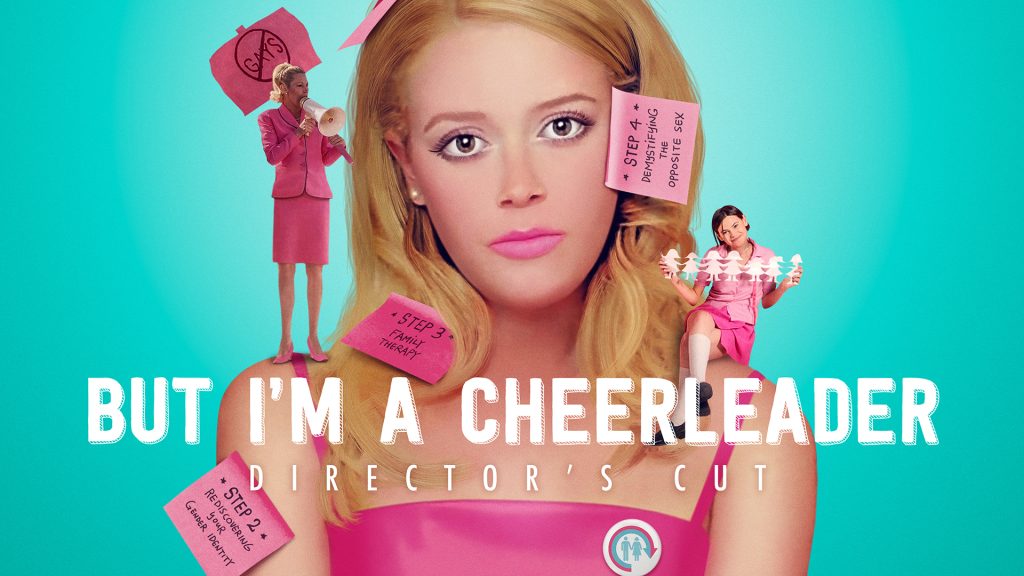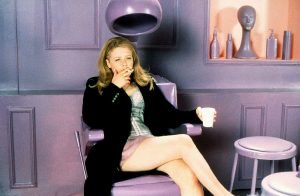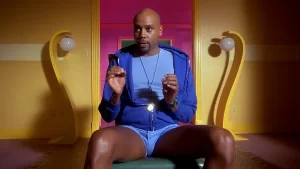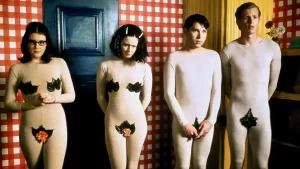
When Jamie Babbit’s audacious comedy But I’m a Cheerleader debuted at the Toronto Film Festival in September 1999, it was met with critical scorn. Yet, over the years, this unconventional rom-com has emerged as a landmark LGBTQ+ film, celebrated for its groundbreaking and humorous take on lesbian representation. Babbit’s film offers a campy yet heartfelt critique of gender stereotypes and the harmful practice of conversion therapy.
Set against the backdrop of a conversion therapy camp, But I’m a Cheerleader follows the story of Megan Bloomfield, a cheerleader portrayed by a then-19-year-old Natasha Lyonne. Megan is sent to the camp by her conservative parents, who, despite her obvious signs of being a lesbian—such as her vegetarianism and love for Melissa Etheridge—are in denial about her sexuality. The film presents Megan’s bewilderment as she arrives at True Directions, pom-poms in hand, ready to confront a “treatment” designed to suppress her identity.

Babbit, who was a young femme lesbian in her twenties at the time, crafted the film out of a desire to see stories that resonated with her own experiences. “I didn’t see any movies about lesbians that felt like they were for me,” she tells the BBC. “I wanted to tell a story of a femme lesbian who rescues a butch lesbian using her femme powers of cheerleading.”
The film subverts the typical coming-of-age narrative, replacing the usual journey of self-discovery with a satirical five-step program aimed at “curing” homosexuality. Megan’s path to self-acceptance intertwines with that of Graham, a rebellious lesbian played by Clea DuVall, who quickly sees through the camp’s veneer.
In an era when queer cinema often leaned towards darker, more somber themes—exemplified by films like Peter Jackson’s Heavenly Creatures and Kimberly Peirce’s Boys Don’t Cry—But I’m a Cheerleader stood out for its humor and light-hearted approach. Babbit explains her decision to infuse comedy into serious subject matter by reflecting on the AIDS epidemic and its impact on the LGBTQ+ community. “Comedy was important because if you don’t laugh, you’re crying,” she says.

The film’s playful satire is evident in scenes where teens attempt to identify the “root” of their homosexuality, offering absurd explanations like attending an all-girls school or having a mother who wore trousers. The camp itself, with its polyester uniforms and kitschy decor, epitomizes the artificiality of the conversion therapy ideology. Babbit describes the camp’s aesthetic as reminiscent of a “Barbie Dreamhouse,” highlighting its superficiality and detachment from reality.
But I’m a Cheerleader also addresses the outdated gender stereotypes perpetuated by conversion therapy. At True Directions, campers are told that feminine interests equate to being straight, while traditional domestic roles are portrayed as markers of heterosexuality. The film’s climax, featuring a mock heterosexual encounter in absurdly modest costumes, critiques these harmful stereotypes with a blend of humor and irony.

Initially, But I’m a Cheerleader struggled to find its footing. The film received an NC-17 rating due to its depictions of lesbian sexuality, forcing Babbit to cut scenes to secure an R rating. The critical reception was equally harsh, with Variety and Entertainment Weekly delivering scathing reviews. On a modest budget of $1 million, the film grossed only $60,000 on its opening weekend.
Despite this rocky start, But I’m a Cheerleader has since achieved cult status, revered for its unique blend of comedy and critique. Babbit’s aspiration to create a “gay Clueless” proved challenging due to industry reluctance, but her vision ultimately resonated. The film’s legacy is evident in its influence on subsequent queer cinema, inspiring works like Angela Robinson’s D.E.B.S and Emma Seligman’s Bottoms.

The film’s impact extends beyond cinema, influencing pop culture and contemporary LGBTQ+ media. The 2022 music video for MUNA’s “Silk Chiffon” pays homage to the film’s cheerleading motifs, while The Miseducation of Cameron Post echoes its concluding scene. Babbit notes, “It’s like reflections of reflections of each other’s art,” highlighting how But I’m a Cheerleader continues to inspire and resonate with new generations.
In reflecting on the film’s journey from critical derision to celebrated cult classic, Babbit observes, “I’m less shocked now that it still speaks to people because it spoke to me when I made it. I just knew there was nothing like it.” Today, But I’m a Cheerleader stands as a testament to the power of humor and optimism in addressing complex issues, cementing its place as a beloved cornerstone of LGBTQ+ cinema.





